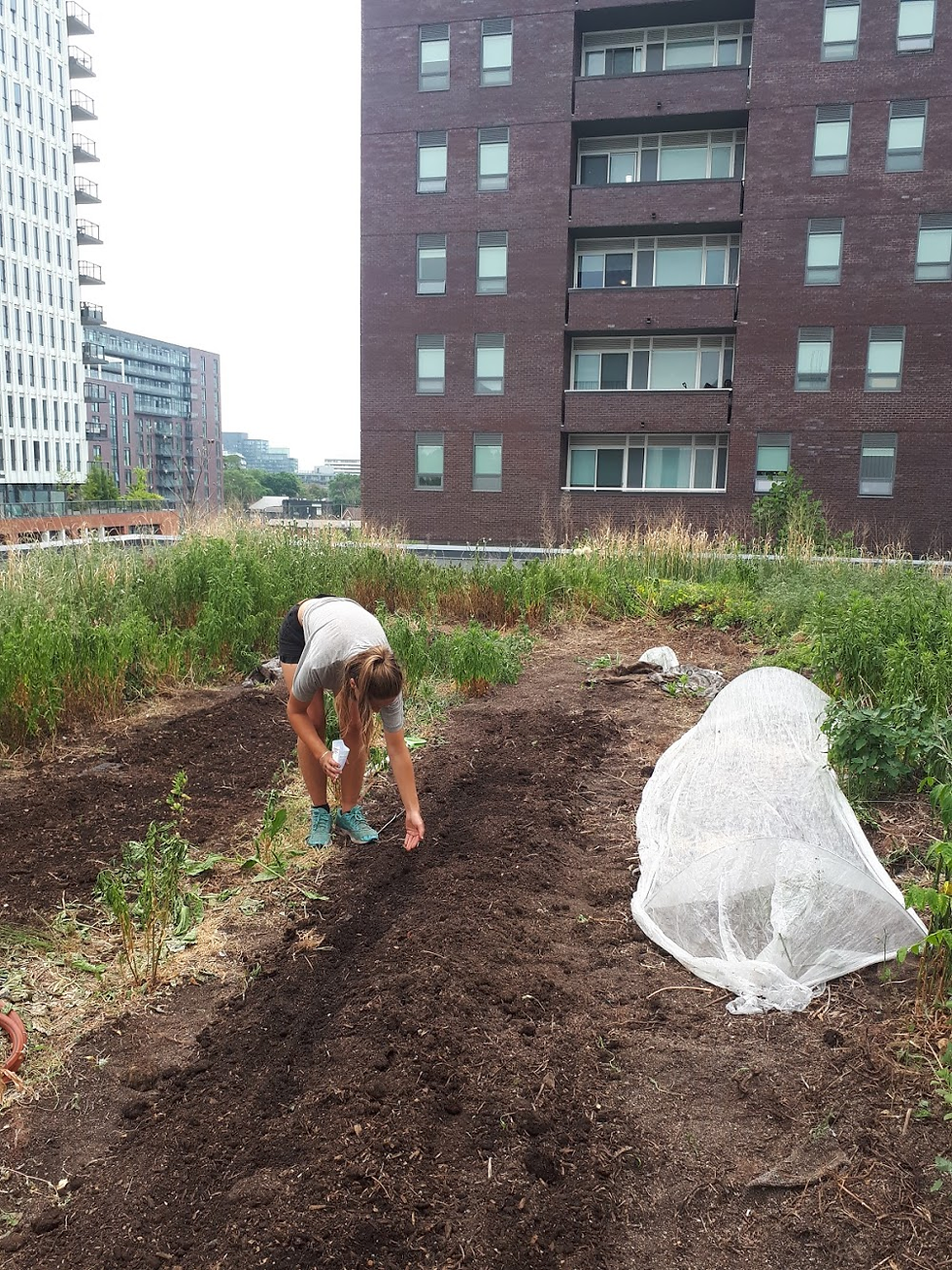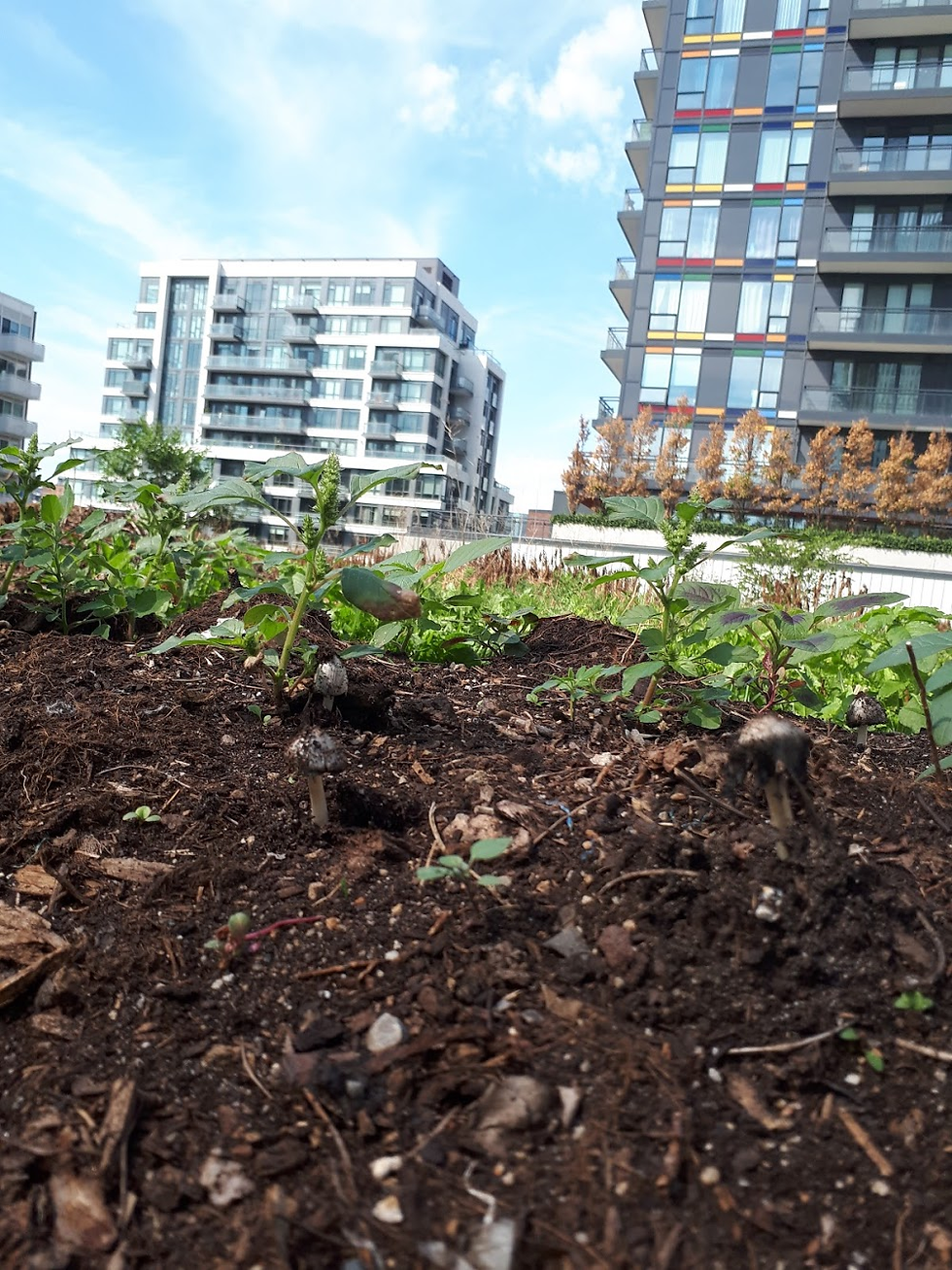Green Roof at CSI-RP
- greenthumbs2021
- Sep 1, 2020
- 3 min read
by Dev Vyas
One of the spaces that Green Thumbs manages is a green roof at our office site, the Center for Social Innovation in Regent Park’s Daniels Spectrum building. The green roof was installed with low maintenance native plant species, and our team uses a small portion of the space to grow food!
There are pros and cons to growing on a green roof, especially one that wasn’t designed for gardening. While the ample sunlight and lack of squirrels is wonderful, we have to contend with shallow low-quality soil, weight limitations, and the layer of plastic netting that was originally used to install the native plants.
We started this season by weeding the two rows that had been used for food production last year, and clearing out a third row. We lost soil when we removed the plastic netting, and our soil was five inches deep at best, so we had to haul dirt and worm castings onto the roof. It takes a lot of time and labor to transport that much soil, and our priorities for the season became clear: figure out how to build soil on the roof, improve the quality of the existing soil, and grow fresh produce to donate locally!
We planted bush beans, collard greens, kale, and a lettuce mix in the first two rows. Bush beans, like all other plants in the Legume family, work with a bacteria called rhizobia to increase nitrogen levels in the soil. This process, called nitrogen fixing, takes nitrogen from the air and converts it into a form that is available for plants to use, essentially fertilizing the soil! Both bush beans and greens have relatively shallow roots, making them a good fit for the roof. We also planted some watermelon plants and mustard greens in the third row.

As the season progressed, our weeds (mostly Callaloo, Lambsquarters, and Purslane) became bigger and more pervasive. Instead of uprooting our weeds, we clipped the stems right at the base and left the roots to decompose in the ground so they would contribute to soil mass and prevent erosion! We sold these edible greens at the Cabbagetown Farmers Market, included them in our donation boxes, added them to our worm bins and compost, and laid them underneath sheet mulches to contribute organic matter.
The 3rd row became the site for a lasagna garden (or sheet composting) project. Lasagna gardening is the process of layering high-nitrogen materials with high-carbon materials, often with a cardboard weed barrier and dirt over top. This creates a healthy environment for soil-building microorganisms to live, and is an effective way to add nutrients to the soil without direct fertilizer! Over time, the lasagna garden decomposes into healthy, living soil. We sourced raw materials (produce scraps, coffee grounds, sawdust, eggshells, spent grains, chicken manure) from around Toronto and layered them over 32 cubic feet. It will take some time to break down, especially because the roof’s shallow soil is inhospitable to worms, so we’re excited to see how it pans out! Check out this graphic that shows where we sourced all the materials:

Now, at the tail end of the season, the roof has transformed from patches of lifeless dirt into a little green explosion. Our bush beans have matured, and our first harvest of only the ripest beans yielded over 7 pounds! We’ll have a couple more harvests of that size as beans continue to ripen. We donated over 5 pounds of greens from our first lettuce harvest, and we’re looking forward to our kale and collard harvest in the fall. The watermelons have been pollinated and there are little melons ripening on the vine. The lasagna garden is settling in, with edible weeds growing from the top, and we even had some mushrooms make an appearance!

We’ve grown healthy food and donated it locally, started building soil on the rooftop, and improved the existing rooftop dirt through a season of regenerative management. It’s been a good season for our little rooftop ecosystem, and next season will be even better.





Comments